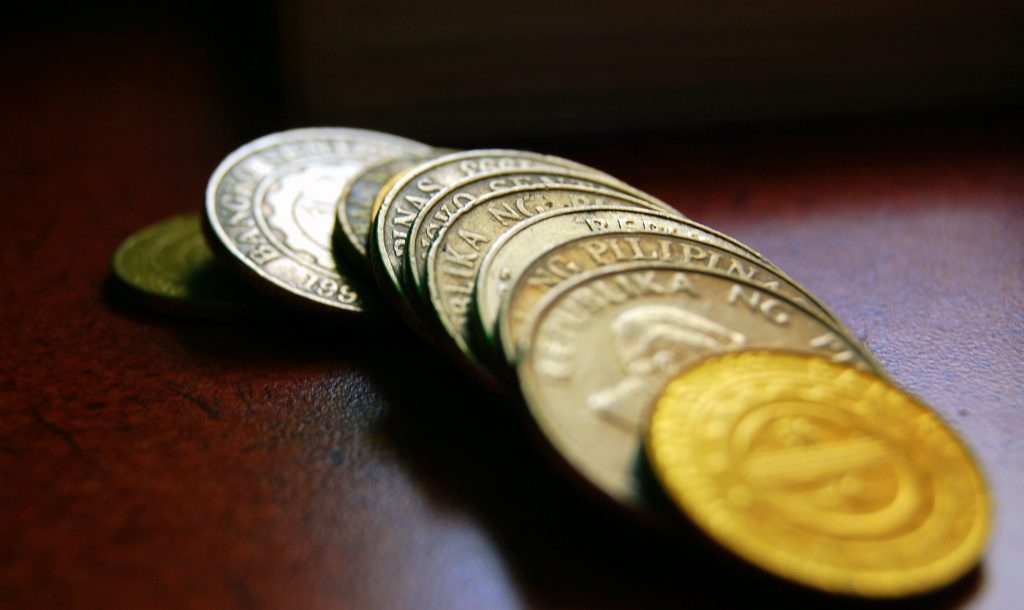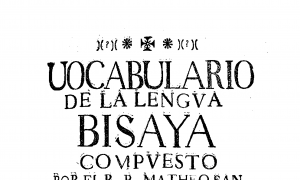The immediate postwar period, especially the 1950s, saw both Japan and Korea experimenting with the state-led creation of export-oriented economies. These experiments were, of course, followed by projects in Singapore, Taiwan, and, to a lesser extent, Malaysia. However, nothing similar happened in the Philippines.
As Caroline Hau noted, the Philippines’s exclusion from the developmentalist trend was not a foregone conclusion. After the war, it had a well-educated, functional bureaucracy, which was formally committed to import-substitution and industrialisation. This situation placed it way ahead of the impoverished South Korea of this period, which the USAID called a “bottomless pit.” Moreover, in the 1970s and 1980s, dictator Ferdinand Marcos attempted export-oriented industrialisation through large-scale public financing and the strategic depreciation of currency. But his vision failed to materialise because of multiple financial crises and, of course, the wanton corruption of the patrimonial regime.
Despite this history, no one today would consider the Philippines as approximating something even close to a developmental state. The leftwing consensus is that the country is servile to its former colonial master, that it is “too American”, and hence, in activist parlance, “too neoliberal” for developmentalism.
“Neoliberalism” is, of course, of recent coinage, and broadly refers to the various deregulations forced on developing countries by the developed world—the so-called Washington Consensus of the 1990s. In recent years, it has become a convenient way for activists to explain anything and everything about economic underdevelopment.
In this article, I want to argue that the failure of developmentalism, indeed, stems from the Philippines being “too American”, but that neoliberalism is not the American tradition that Filipino economists adhere to. As the US’s only former colony, Filipino affinity with American economics has a longer history—one that can be traced to the late 19th/early 20th century American Progressive Era.
This piece aims to do three things: first, to show that the failure of developmentalism in the country stems from the mainstreaming of deflationary economics in the colony. Second, that this deflationary tradition was derived from the Republican politics of the Progressive Era. In particular, I examine how the Republican aversion to the populist economic policy of Democrat William Jennings Bryan unfolded in the colonial context through deflationary policy. Third, I want to revisit the collapse of the Philippine National Bank in 1921 to provide a case study of how a crisis solidified the hegemony of deflationary economics in the minds of Philippine policymakers.
Let us begin with some definitions. By deflationary economics, I refer to, as the name implies, a macroeconomic philosophy that prioritises the prevention of price increases, over, say, the extension of credit to industry or the reduction of unemployment. Deflationary economics is commonly against the expansion of the money supply to boost economic productivity or provide social services. It is also against currency depreciation, likewise because of the inflationary pressures it creates.
Presently, in the United States, the anti-inflationary tradition is most evident in the Libertarian Party and the Koch-funded wing of the Republican Party, which advocate for a return to the Gold Standard. With a Gold Standard, they argue, inflation is prevented since one cannot expand the money supply without a corresponding increase in gold reserves. And, for them, inflation is of course an essential evil because it erodes the wealth of the rich, whom they believe legitimately earned those riches.
These beliefs are the exact opposite of those advocated by both Keynesians and advocates of developmentalism. We know, for instance, that Japan courts inflation when it needs to boost spending. And we also know that developmental states are comfortable with currency depreciation as a means to boost export-driven growth.
By contrast, the Philippines has traditionally been one of the most inflation-allergic countries in Asia. During the 1950s, for example, the Philippine Central Bank’s number one priority was not simply to manage inflation, but to dial it back. Central Bank Governor Miguel Cuaderno, who led currency policy for all of the 1950s, was an economic conservative and an advocate of strict austerity, viewing inflation as a moral ill. In a speech delivered during an event he called “National Austerity Day,” he claimed:
Inflation is an economic evil which not only retards economic progress but also multiplies its basic problems.
Having rendered inflation a fundamental evil, Cuaderno rejected any economic policy that would raise prices, particularly depreciating the peso.
In 1956, Cornell economist Frank Golay was obviously referring to Cuaderno when he argued that “Advocates of conservative economic policies, by identifying themselves as proponents of the ‘sound peso,’ introduced a shibboleth which severely circumscribed the debate”. Hence, despite the presence of strict dollar supply controls, the artificially strong peso ensured that the Philippines remained import dependent for most of the postwar period. Naturally, this situation created massive trade deficits, such that, by the end of the 1950s, export earnings amounted to less than 10% of the country’s income. The refusal to depreciate, notes Gerardo Sicat, was the single most important factor for the Philippines’ inability to create a robust export industry.
Apart from guarding the exchange rate, Cuaderno also ensured the minimal expansion of the money supply, which barred the government from extending credit to selected industries that could have been the country’s export-oriented winners.
Cuaderno was such a strict advocate of austerity that, even after the United Nations reported a net deflation from 1949–1957 (Cuaderno’s first term), he still refused to either depreciate the currency or provide credit to industry.
Cuaderno’s thinking has had long-lasting effects on Philippine economic policymaking. In one of his last public lectures, for example, I witnessed former planning director Cayetano Paderangga claim that it remains hard to depreciate the peso because the Central Bank has a reputation of believing it is “unmanly” to have a weak currency. When one turns on the news and an economic report comes on, the usual indicators for economic health that anchors discussion are currency value and the rate of inflation. The peso has been dropping recently (apparently because of the president’s mouth), and his economic team is struggling to explain to the public why this is not necessarily the end of the world.
Why is austerity thinking—economic conservatism—seemingly built into the psyche of Philippine policy makers?
Let us return to Central Bank Governor Cuaderno. Had Cuaderno been a contemporary economist, a left-wing critic would have passed him off as a “pawn of the IMF”. Indeed, especially during the 1990s, counter-inflation was the primary goal of the global financial institutions. But Cuaderno was central bank governor in the 1950s, a time when the consensus within Bretton Woods institutions like the IMF was not austerity, but Keynesianism.
The irony is that the Philippine Central Bank in the 1950s referred to the IMF’s suggestions to depreciate the Philippine peso as unfair “foreign interventions”. Moreover, in Cuaderno’s mind, Keynesianism was a developing world trend, inapplicable to the Philippines. It was, he noted, too inflationary for developing economies.
This religious anti-inflationary rhetoric had a source. A lawyer by profession, Cuaderno was not a trained economist. In fact, there were barely any professional economists in the Philippines at the turn of the century. Filipinos learned economic theories through the American-led bureaucracy and not educational institutions. Cuaderno’s first experience as a banker, for example, was when he served as a lawyer for the Philippine National Bank, or PNB.
Prior to the establishment of the Central Bank, it was the PNB that served as the central node for currency policy in the Philippines. The bank was established after the colony’s transition from the bimetallic currency of the Spanish period to a so-called gold exchange standard that would integrate the Philippines into the network of American trade. In lieu of a more direct gold standard, the gold-exchange standard regulated the amount of Philippine pesos in circulation by the establishment of a dollar reserve fund in New York. Since dollars were convertible to gold at the time, it was, in effect, an indirect gold standard.
The gold exchange standard was the brainchild of an emerging generation of economic “money doctors” that the Republican administrations of the Progressive Era began to tap as economic consultants. These included people like Charles Arthur Conant, a financial and economic journalist, who, like Lenin, believed that the growth of capitalism necessitated imperialism (of course his normative assessment of this process was the opposite of Lenin’s). Another adviser was Edwin W. Kemmerer, an academic, who, in the 1930s, would become famous for spreading the US gold exchange standard to Latin America and Eastern Europe. It was through this generation of economists that Filipino bureaucrats were initially introduced to macroeconomic policy.
If there is one thing that united financial advisers that presidents William McKinley and Theodore Roosevelt sent to the Philippines, it was their affinity for the gold standard. For example, Kemmerer believed that the gold standard imposed discipline and prevented the excessive spending. This discipline was necessary in the Philippines, since, as he noted in a speech in Cornell University, Filipinos were “children,” who had not yet learn “the lessons of political honesty, of thrift, and of self-reliance.” Without this thrift, inflation would occur, and inflation was unmanly and dishonourable since it eroded the wealth of hard-working citizens.
These ideas of unmanly and uncivilised economics had roots in the American domestic politics of the Progressive Era, and they centred around the figure of William Jennings Bryan.
Historian Jackson Lears notes that the two major electoral debates of that period concerned, first, bimetallism vs. the gold standard, and second, imperialism. The Republican Presidents (McKinley and Teddy Roosevelet) and their perennial Democratic challenger, Bryan, were divided along these issues. Bryan was a critic of what he called the “Crime of 1873”, the coinage act, which demonetised silver and placed the US on a gold standard. As a candidate with close ties to the agriculturalists and the populist Greenbacker movement, Bryan favoured silver and its consequent inflation as a way of boosting agricultural profits. As an anti-imperialist, he was against the occupation of the Philippines.
Bryan simplistically believed that the electorate could be neatly divided along these three issues of gold, trusts, and imperialism. In an essay in 1900, he claimed these were the three “primary questions” that determined most of one’s positions relative to other subordinate ones. Put simply, supporting gold, trusts, and imperialism, made one a Republican. And opposing these made one a Democrat.
Given how neatly Bryan viewed the interrelation among these issues, it is easy to think that his landslide loss to McKinley in 1900 was an electoral endorsement of gold and imperialism. However, as historian Thomas A. Bailey observed as early as 1937, anti-imperialists from both the Republican and the Democratic Party supported McKinley because they feared bimetallism. Despite the Iraq/Vietnam-like quagmire in the Philippines, they preferred what Bailey referred to as the “known weakness of McKinley” over the “wild theories of Bryan”.
McKinley and especially his vice president Roosevelt were acutely aware of how monetary policy diverted attention away from the brutality of what we now call the Filipino-American war. In an era before Keynesianism, gold was intuitive and popular. Citizens did not mind if the Republican Party went on a foreign war, as long as it preserved the domestic economic order.
Initial Republican policy towards the Philippines must therefore be read in the context of the party’s triumph over Bryanism, a triumph of gold and of imperialism. It is thus telling that the person first sent to organise currency policy in the Philippines was Arthur Conant, who explicitly linked the gold standard to American imperialism. Conant believed that American economic dominance not only required imperialism to create new markets for American products, but also required the adherence of multiple countries to the gold standard, which would compete with the de facto sterling standard of the English. This reflected a view he shared with McKinley concerning the “civilizing” effect of gold on backward economies.
The laboratory for these theories would be the Philippines, where Conant immediately phased out the Mexican silver peso and implemented the aforementioned gold exchange standard in 1903. I cannot go into detail here, but Emily Rosenberg’s superbly researched Financial Missionaries to the World documents how macroeconomic policies tested in the Philippines were replicated by American consultants in Latin America and Eastern Europe in the 1920s and 1930s.
What allowed these missions to be launched was the perceived success of the gold exchange standard in the Philippines and the so-called competence of economists who had worked in the colony. People like Conant and Princeton’s Edwin Kemerrer established their bona fides as “money doctors” based on “rationalizing” currency policy in the colony.
But were they really successful? Rosenberg, though critical of these missionaries, does not detail the contradictions of their policies in the Philippines, focusing most of her attention on Latin America and Europe and showing how the gold exchange standard led to liquidity crises in places like Poland. What I hope to do in this final section is to demonstrate that the Philippines prefigured the collapse of the gold exchange standard in these countries and even in the US itself. The Philippines, if you like, represented a dirty little secret about the limitations of monometallism.
So let’s go back to the colony. Bryan’s final electoral defeat closed the book on the gold standard, and by the time Woodrow Wilson emerged as a viable challenger from the Democratic Party, “free silver” was no longer as relevant a cause. It was the period that economic historians Barry Eichengreen and Peter Temin refer to as the high point of a “gold standard mentalité” among American academics and policymakers. American economic managers believed in the “virtues of thrift, reliability, stability, and cosmopolitanism” and saw the gold standard as “moral, principled, and civilized” bulwark against fiat money. It was impossible, in this context, to argue for an alternative.
The initial implementation of Conant’s gold exchange standard in 1903 seemed to be successful. It put order into a previously confused silver-based currency system, and stabilised the once heavily fluctuating peso value. In retrospect, however, this success was coincidental.
Economic historian Frank Golay provides two reasons for the initial success of the gold exchange standard in the colony. First, the reduction of army spending in the Philippines at the end of the Philippine-American war reduced import expenditures, paving the way for an export surplus in dollars. Second, a congressional relief appropriation was used to pay the remaining troops, “who in turn spent most of their pay in the islands, thereby contributing to the buoyant supply of dollars in the colony”.
But these were all unreliable sources of currency surplus. Despite a decrease in military spending, the infant colonial bureaucracy needed to extend the colonial state outside Manila. Moreover, largesse from Washington would be less forthcoming as successive colonial governments sought to make the Philippines fiscally independent. Golay adds that “American rule of the Philippines was accomplished ‘on the cheap’”, and “the $3 million relief appropriation of 1903 was the only direct congressional subvention to the colonial government prior to establishment of the autonomous Philippine Commonwealth in 1935.”
By 1911, the colonial government was chafing under the weight of its infrastructure projects. Needing to fund projects like a railroad to the Northern city of Baguio and a new dormitory for the Philippine Normal School, Governor General Cameron Forbes lobbied for and successfully passed the Gold Standard Fund law. The law, explained Forbes, provided “that certain accretions to the fund unnecessary for proper protection of the currency be returned to the general fund,” letting him “use half the fund for loans to provinces and municipalities for public works, and also in loans to railroads to expedite construction”.
In the years that followed, American and Filipino bureaucrats expanded the money supply to extend numerous agricultural loans through the various agricultural funds and eventually, through the Philippine National Bank founded in 1916. Apart from being an agricultural bank, the PNB become the de facto depository of the gold exchange standard fund.
The expansion of credit under the new bank would divert more money from the gold standard fund into the economy. This meant that fewer dollars were in reserve to back the increasing pesos in circulation. Economists of the period, like Kemmerer, saw this as a violation of the principles of the gold exchange standard.
What few recognise today is that the PNB was initially a success. In his economic history of the Philippines, Onofre Corpuz notes that PNB loans were one of the few successful attempts at state-led efforts to boost agricultural production.
Yet, because of an economic crisis in 1921, the legacy of the early 20th century PNB is mired in controversy.
The crisis had two elements. First, it was a period of inflation, probably as a result of the increase in the money supply. More importantly, it augured a liquidity crisis for the Philippine government.
In 1921, borrowers began defaulting on agricultural loans and the bank was unable to pay its foreign obligations in Shanghai. Knowledge of the crisis came in trickles. In February 1921, the Republican-leaning New York Tribune claimed that the Philippines was “in chaos”, reporting that the Democratic administration of Woodrow Wilson had left a legacy of financial mismanagement in the country. Many of the facts had yet to emerge, but the report estimated that the Shanghai Branch had lost $4 to 5 million after ill-advised silver speculation. It also castigated the bank for ill-advised “credits to hemp exporters, costly financing of sugar centrals, loans to concerns in the coconut oil industry and financing of men who took over former German properties…” It claimed that around $2 million was lost to hemp speculators and that some $16 million was tied to “ill-performing loans to sugar centrals.”
These initial reports formed the basis of the standard Republican explanation for the crisis, enshrined in a report written by General Leonard Wood and former Governor General Forbes. The report chastised the Filipinos and the Democrats for their profligacy and condemned the peso for degenerating into a “fiat currency”—the worst accusation one could make in a period ruled by the gold standard mentalité.
The effects of the crisis, however, were overblown. I am currently looking at the books of the PNB from this period, and it is clear that the statistics from both the New York Tribune and the Wood-Forbes report were exaggerated. For instance, the numbers they cite for losses in, say, loans to the sugar industry amount to all of the money loaned by the PNB to that sector. It would strain credulity to think that all those loans were non-performing and that the bank received nothing from collaterals.
A common logic—play nice with Beijing, get investment—doesn't fit the facts in the Philippines.
The Philippines’ Chinese FDI boom: more politics than geopolitics
Finally, I am not convinced that the inflation in the Philippine market can be considered so sharp as to constitute a major crisis. Yoshiko Nagano, for example, claims that 1921 was a crisis of inflation, but she does not provide us with the inflation rate. Without statistics, we must rely on anecdotal data. The work of Jim Richardson on the labour history of the Philippines, indeed, shows that the economy underwent inflation . But, rather than freezing consumption, its most immediate effect was to increase wages, since the higher prices entailed more profits. Richardson categorises the period a boom times for labour.
These facts challenge the explanations of American policy makers concerning the crisis, of which there are two.
The first is the Wood-Forbes thesis, which claimed that the loans were ill-advised since the money went to corrupt local oligarchs who had friends in the National Bank. Put simply, Wood and Forbes did not trust corrupt Filipinos, whom they believe were coddled by Democrats. This explanation was uncritically reproduced in the work of Harvard historian Peter W. Stanley in the 1970s, and from there made its way to the work of political scientists researching the Philippine oligarchy. In the hands of Paul Hutchcroft, the Wood-Forbes thesis became an early case study of “booty capitalism” in the Philippines.
The second explanation came from a no less imperialist source. Edwin Kemmerer, a gold standard missionary who had imposed brutal austerity programs in Latin America and Eastern Europe, claimed that the crisis could have been prevented had the colonial government strictly adhered to the gold standard. Such adherence, he argued, would have constrained the quick expansion of credit that led to bad loans. Presumably, the restricted money supply would have also tempered inflationary pressures.
This explanation fails upon closer inspection when one takes into context the US deflation occurring in this period. A strict adherence to the gold standard would have made Philippine products more expensive in the US market, and would have made the pain of a deflationary market more acute.
Yet Yoshiko Nagano’s recent work on the PNB crisis also uncritically reproduces Kemmerer’s assessment—a view so clearly beholden to restrictive orthodoxy of the gold standard mentalité. According to Nagano, the crisis was a result of the colony’s deviation from the “fundamental principle of the gold exchange standard,” which “brought grave confusion to the currency and exchange system in the Philippines, and evolved into the grave financial crisis of 1919-1922.”
I want to think about these two explanations and what “lessons” policy makers like Miguel Cuaderno might have gleaned from them. By avoiding any discussion of deflation in the US market—the proximate cause of the crisis—and focusing instead on corrupt oligarchs who failed to impose the holy gold exchange standard, these theses reinforced austerity economics. Since businesses are corrupt, we should not extend credit. Since violating fixed currency rates lead to confusion, we should adhere to stable systems like the deflationary gold exchange standard.
The story of the PNB thus became a morality tale on the evils of extending credit and of “unsound” and “unstable” currency policy.
The crisis is just one example of how American thinking and politics ossified in the Philippines. As I move forward with my research on economic history, I want to look at more events in Philippine economy like this—events which have made the country a prototypical austerity state.
To conclude: the phenomenon of anti-inflationary, conservative economics in the Philippines have roots that go much deeper than “neoliberalism”. They stem from the kinds of debates surrounding the gold exchange standard in the colony. In the case of the Philippines, anti-inflationary economics was not imposed on us by the IMF; rather, it is part of our American intellectual heritage. We were neoliberal even before the term was coined. For those of us therefore, who wish to explore the possibility of developmentalism in the Philippines, we must unfortunately seek ways to dismantle our heralded intellectual patrimony.
 Facebook
Facebook  Twitter
Twitter  Soundcloud
Soundcloud  Youtube
Youtube  Rss
Rss 



